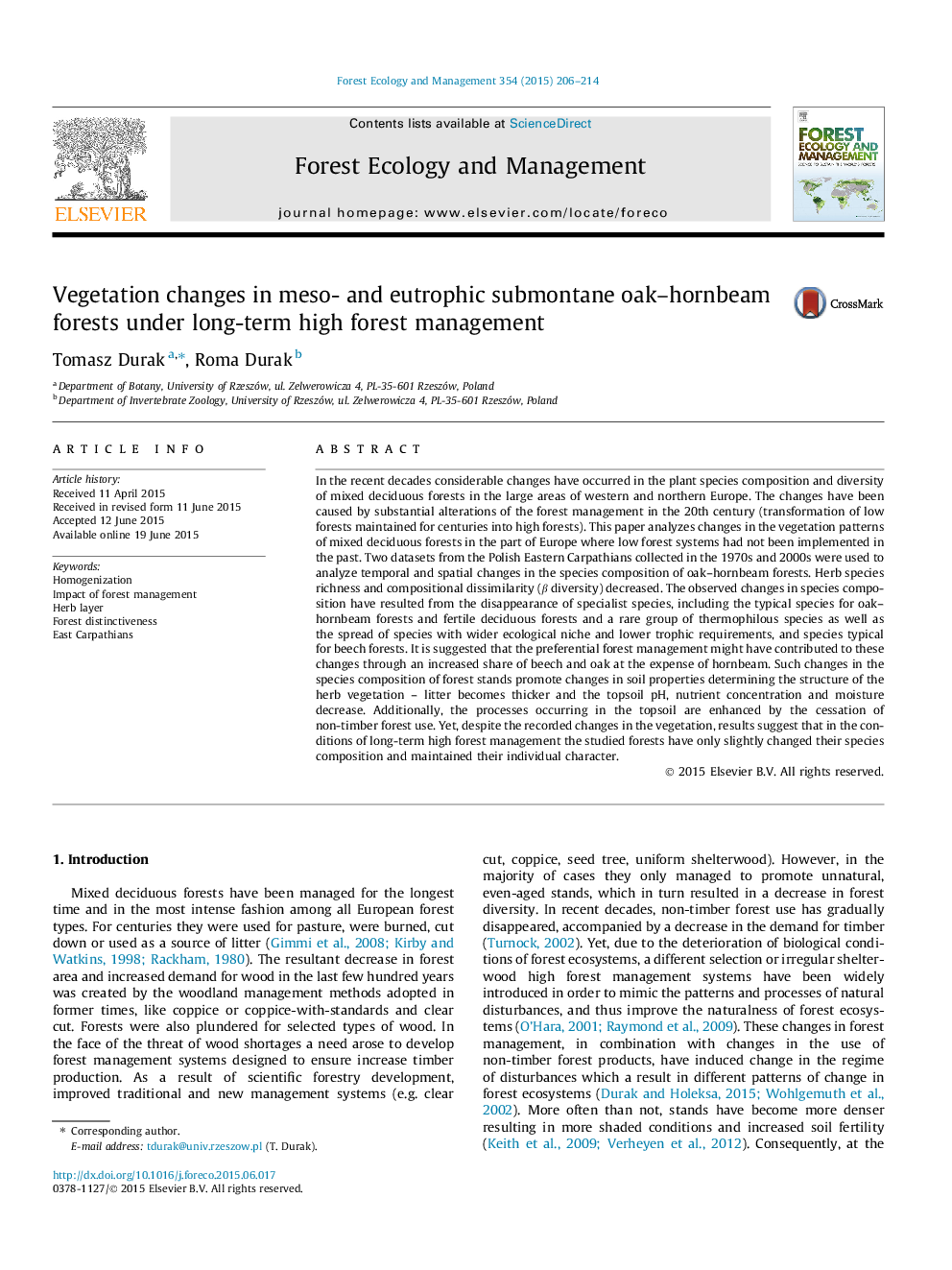| Article ID | Journal | Published Year | Pages | File Type |
|---|---|---|---|---|
| 86151 | Forest Ecology and Management | 2015 | 9 Pages |
•Analysis of changes in vegetation composition in oak–hornbeam high forests.•The similarity of species composition increased between two temporal censuses.•Homogenization is linked with specialist and typical for oak–hornbeam species.•Preferential management and decrease in non-timber use affect vegetation composition.•Despite the long-term high forest management forests maintain their distinctiveness.
In the recent decades considerable changes have occurred in the plant species composition and diversity of mixed deciduous forests in the large areas of western and northern Europe. The changes have been caused by substantial alterations of the forest management in the 20th century (transformation of low forests maintained for centuries into high forests). This paper analyzes changes in the vegetation patterns of mixed deciduous forests in the part of Europe where low forest systems had not been implemented in the past. Two datasets from the Polish Eastern Carpathians collected in the 1970s and 2000s were used to analyze temporal and spatial changes in the species composition of oak–hornbeam forests. Herb species richness and compositional dissimilarity (β diversity) decreased. The observed changes in species composition have resulted from the disappearance of specialist species, including the typical species for oak–hornbeam forests and fertile deciduous forests and a rare group of thermophilous species as well as the spread of species with wider ecological niche and lower trophic requirements, and species typical for beech forests. It is suggested that the preferential forest management might have contributed to these changes through an increased share of beech and oak at the expense of hornbeam. Such changes in the species composition of forest stands promote changes in soil properties determining the structure of the herb vegetation – litter becomes thicker and the topsoil pH, nutrient concentration and moisture decrease. Additionally, the processes occurring in the topsoil are enhanced by the cessation of non-timber forest use. Yet, despite the recorded changes in the vegetation, results suggest that in the conditions of long-term high forest management the studied forests have only slightly changed their species composition and maintained their individual character.
